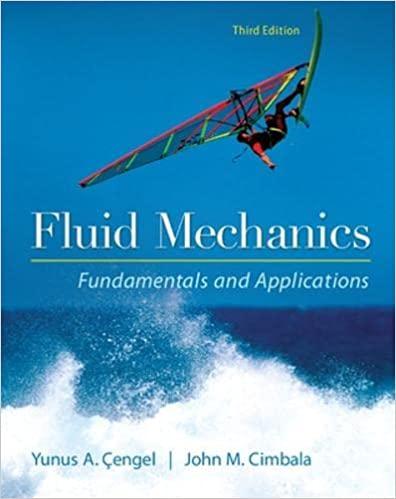In Prob. 14116, we scaled up the model turbine test results to the full-scale prototype assuming exact
Question:
In Prob. 14–116, we scaled up the model turbine test results to the full-scale prototype assuming exact dynamic similarity. However, as discussed in the text, a large prototype typically yields higher efficiency than does the model. Estimate the actual efficiency of the prototype turbine. Briefly explain the higher efficiency.
Data from Prob. 14–116
Prove that the model turbine (Prob. 14–114) and the prototype turbine (Prob. 14–115) operate at homologous points by comparing turbine efficiency and turbine specific speed for both cases.
Data from Problem 14–115
The prototype turbine corresponding to the onefifth scale model turbine discussed in Prob. 14–114 is to operate across a net head of 50 m. Determine the appropriate rpm and volume flow rate for best efficiency. Predict the brake horsepower output of the prototype turbine, assuming exact geometric similarity.
Data from Problem 14–114
A one-fifth scale model of a water turbine is tested in a laboratory at T = 20°C. The diameter of the model is 8.0 cm, its volume flow rate is 25.5 m3/h, it spins at 1500 rpm, and it operates with a net head of 15.0 m. At its best efficiency point, it delivers 720 W of shaft power. Calculate the efficiency of the model turbine. What is the most likely kind of turbine being tested?
Step by Step Answer:

Fluid Mechanics Fundamentals And Applications
ISBN: 9780073380322
3rd Edition
Authors: Yunus Cengel, John Cimbala





